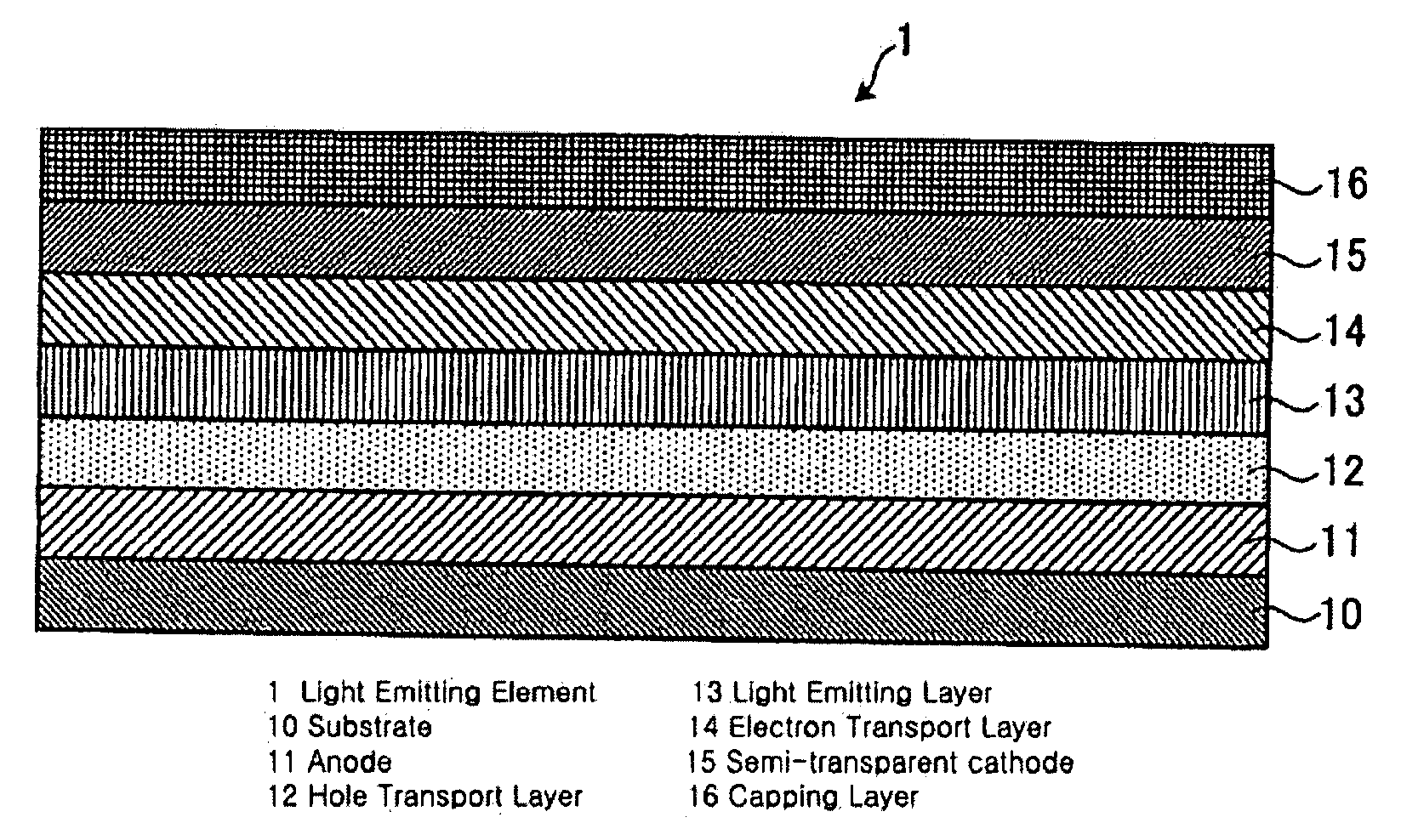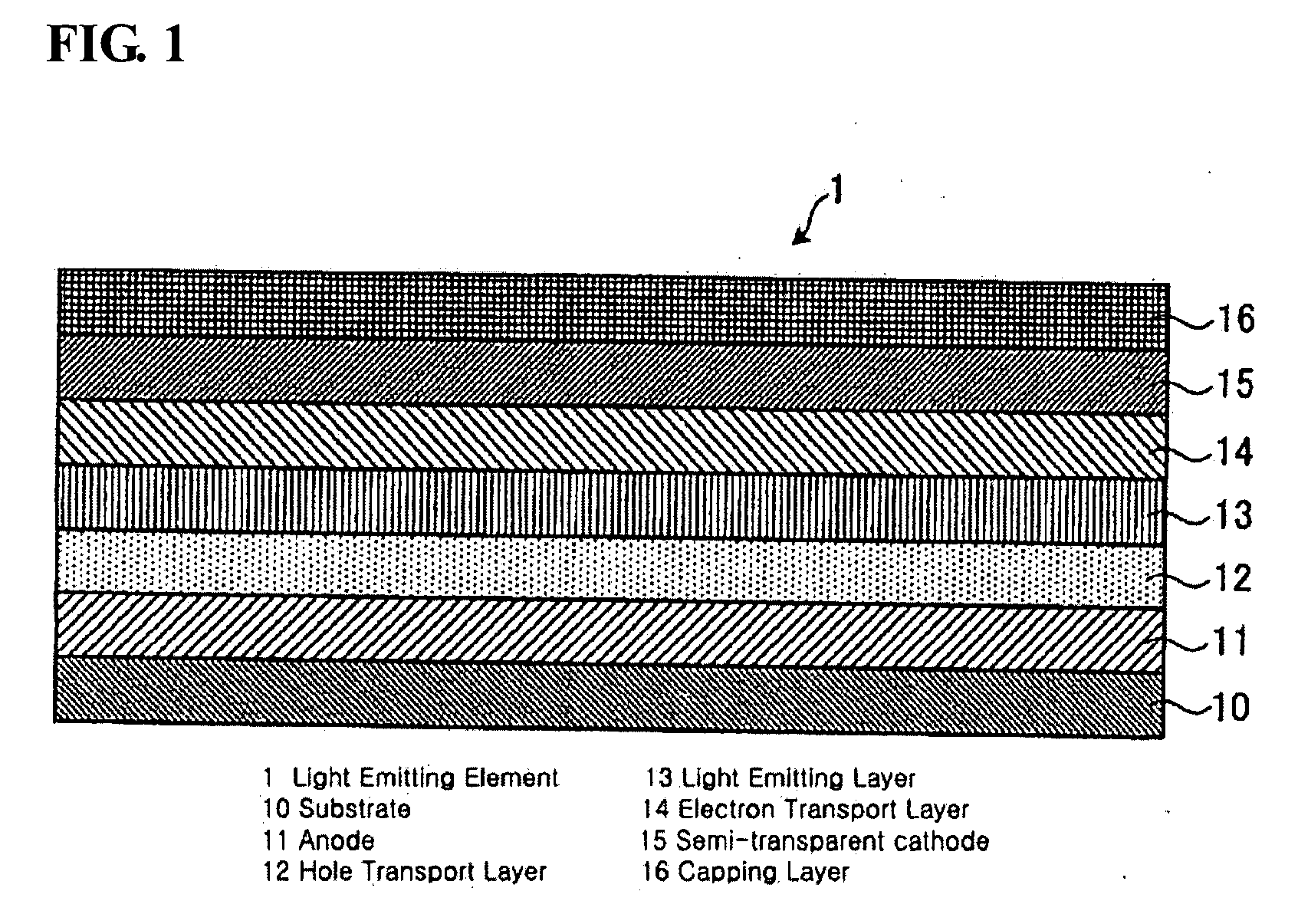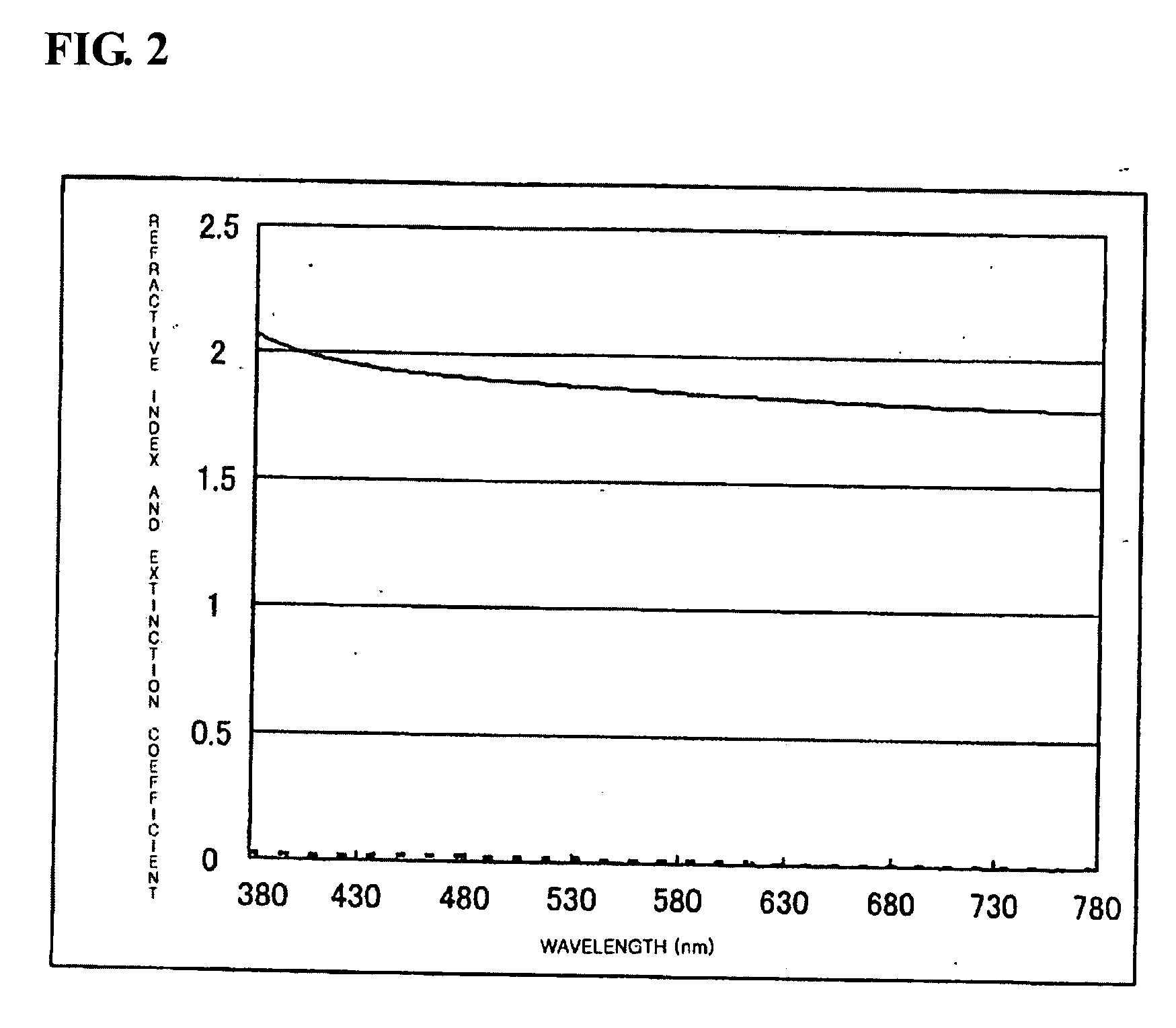Light emitting element, light emitting device having the same and method for manufacturing the same
a technology of light emitting elements and light emitting devices, which is applied in the direction of electrical devices, semiconductor devices, organic semiconductor devices, etc., can solve the problems of inability to apply inorganic compounds for capping layers, inflicting damage on the light emitting element itself, and being inferior in alignment accuracy of metal masks
- Summary
- Abstract
- Description
- Claims
- Application Information
AI Technical Summary
Benefits of technology
Problems solved by technology
Method used
Image
Examples
example
[0059] The example of the present invention will be explained more specifically. A red light emitting element of the present invention has been manufactured as below. First, Ni anode with layer thickness of 100 nm was laminated by sputtering method onto the substrate and then copper phthalocyanine (CuPc) with layer thickness of 20 nm as a hole injection layer was laminated through deposition method onto the Ni anode. Subsequently, N,N′-di(naphthalene-1-yl)-N,N′-diphenyl-benzidine (NPB) with layer thickness of 40 nm as a hole transport layer was laminated through deposition method. And then, Alq3 and 4-(dicyanomethylene)-2-t-butyl-6-(1,1,7,7,-tetramethyljulolidyl-9-enyl)-4H-pyran (DCJTB) as a light emitting layer were deposited by dual deposition. The layer thickness of Alq3 was 30 nm and 1% of DCJTB as the volume ratio was laminated simultaneously.
[0060] Then, Alq3 with layer thickness of 40 nm as an electron transport layer, and Ca with layer thickness of 12 nm and Mg with layer t...
PUM
 Login to View More
Login to View More Abstract
Description
Claims
Application Information
 Login to View More
Login to View More - R&D
- Intellectual Property
- Life Sciences
- Materials
- Tech Scout
- Unparalleled Data Quality
- Higher Quality Content
- 60% Fewer Hallucinations
Browse by: Latest US Patents, China's latest patents, Technical Efficacy Thesaurus, Application Domain, Technology Topic, Popular Technical Reports.
© 2025 PatSnap. All rights reserved.Legal|Privacy policy|Modern Slavery Act Transparency Statement|Sitemap|About US| Contact US: help@patsnap.com



